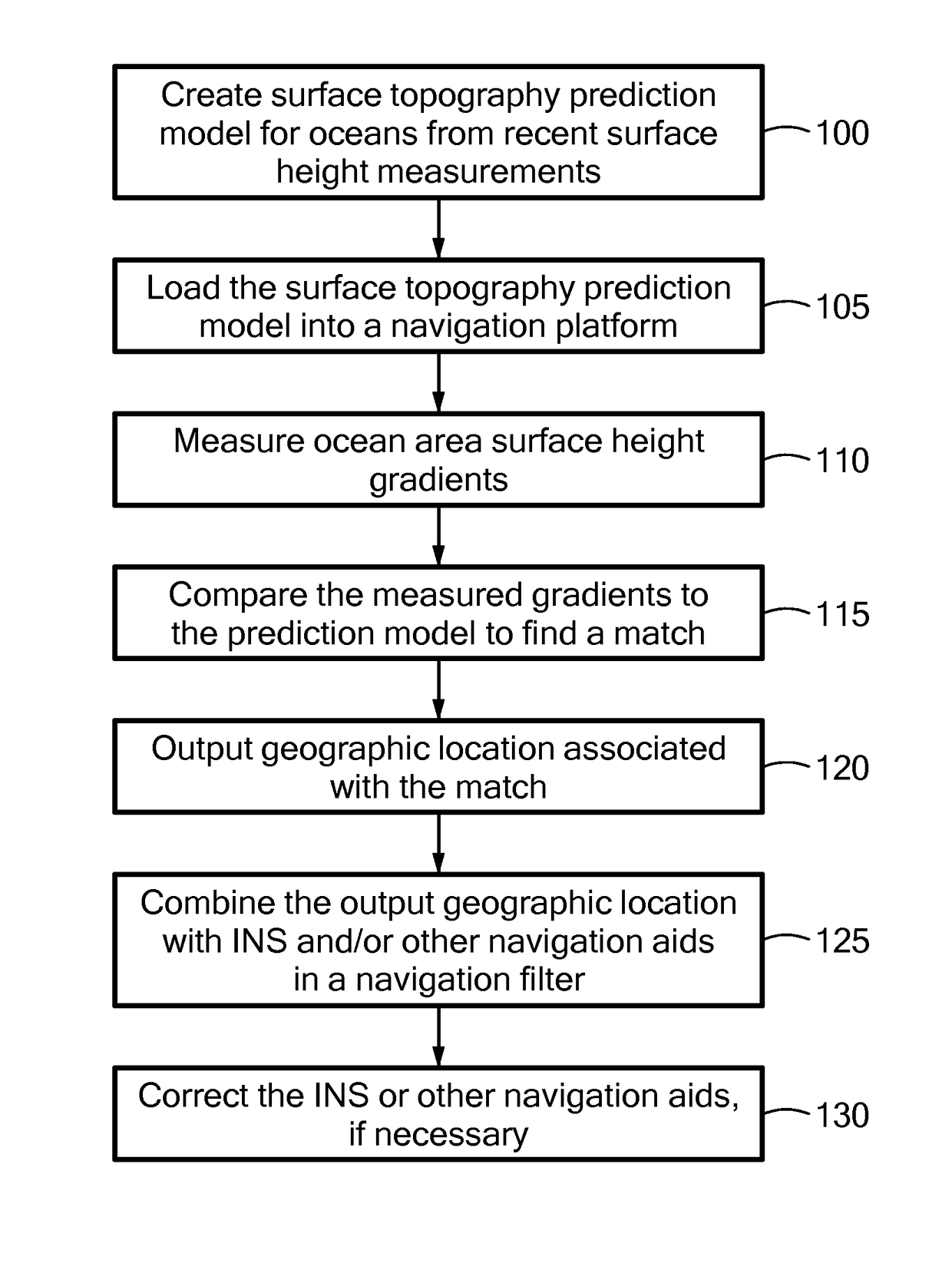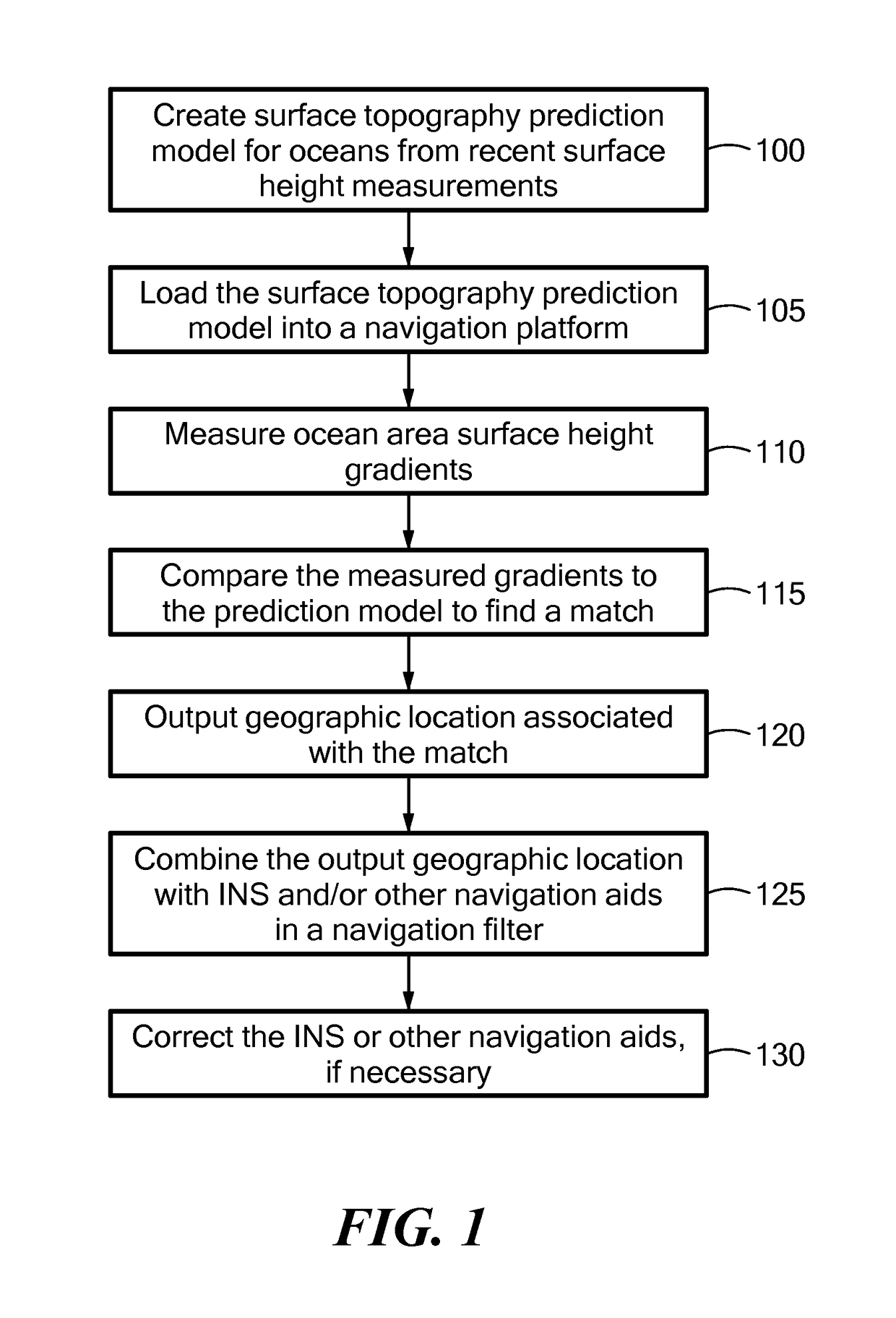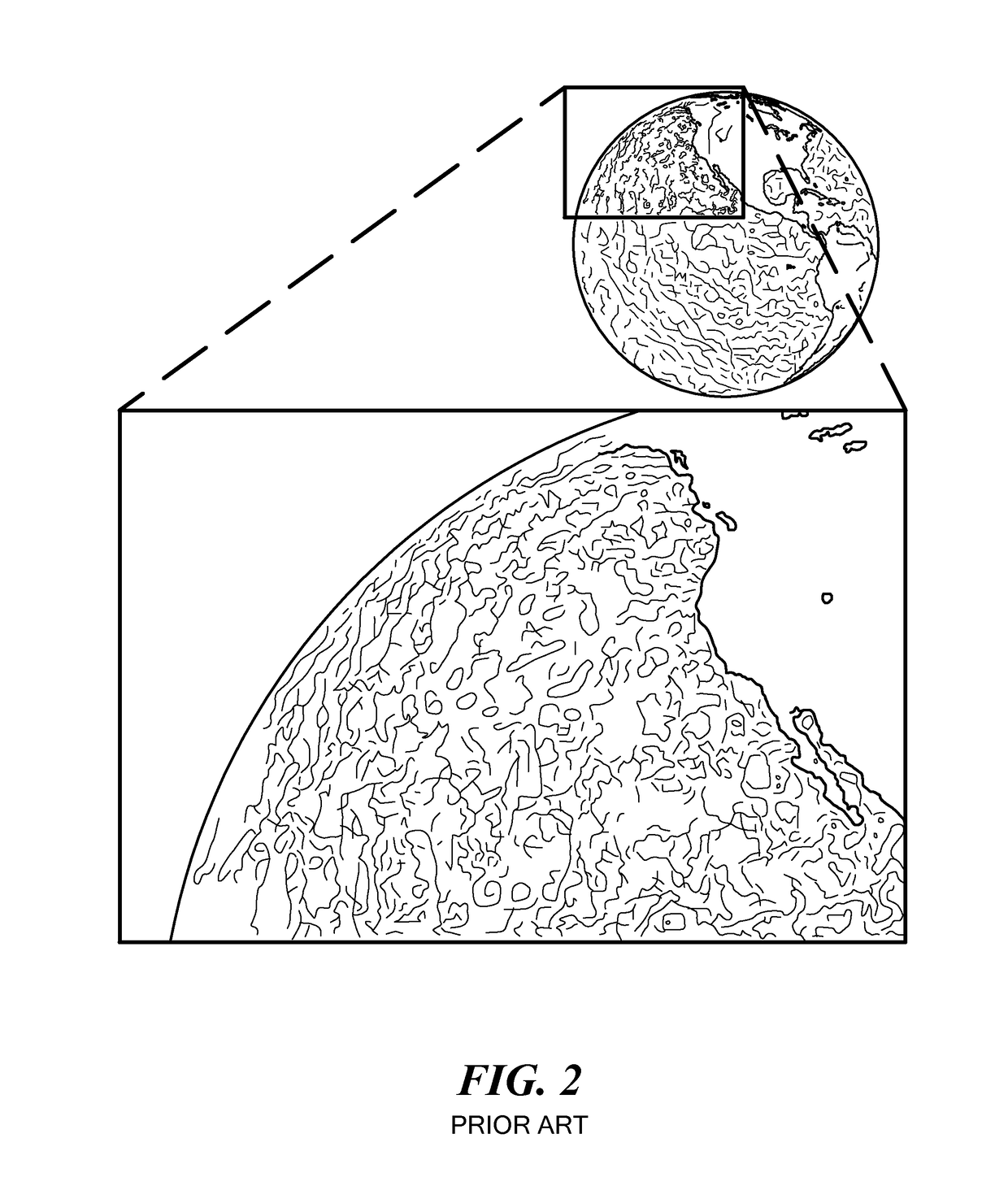Navigation by ocean surface topography
a topography and ocean technology, applied in navigation instruments, maps/plans/charts, instruments, etc., can solve problems such as the disruption of gps signals and rf beacons, and the inability to see celestial objects
- Summary
- Abstract
- Description
- Claims
- Application Information
AI Technical Summary
Benefits of technology
Problems solved by technology
Method used
Image
Examples
Embodiment Construction
[0004]Embodiments of the present invention provide systems and methods for using ocean surface gradients, primarily surface height gradients, for navigation. A system or method compares observed (measured) surface gradients to a catalog of known gradients and / or to gradients predicted by a model to ascertain its location. Although surface height gradients are the primary features matched, other surface gradients, such as temperature, water current and color, may be used. Ocean topography (meaning mapped surface gradients) is dynamic. However, some ocean topographic features remain relatively stable for days or weeks. Furthermore, most ocean topographic features can be predicted, based on historical ocean topographic data, known viscosities of ocean water, ocean currents, prevailing winds and the like, in some cases augmented with weather predictions, known time of year (season), etc. Essentially, the system uses known and / or predicted ocean surface gradients as geographic landmarks....
PUM
 Login to View More
Login to View More Abstract
Description
Claims
Application Information
 Login to View More
Login to View More - R&D
- Intellectual Property
- Life Sciences
- Materials
- Tech Scout
- Unparalleled Data Quality
- Higher Quality Content
- 60% Fewer Hallucinations
Browse by: Latest US Patents, China's latest patents, Technical Efficacy Thesaurus, Application Domain, Technology Topic, Popular Technical Reports.
© 2025 PatSnap. All rights reserved.Legal|Privacy policy|Modern Slavery Act Transparency Statement|Sitemap|About US| Contact US: help@patsnap.com



